Yoga is a form of exercise that involves physical, mental, and spiritual practices. It has numerous benefits for physical and mental health while allowing you to connect with your inner self. Practicing Yoga can improve your quality of life and make you healthier. How did yoga come to be? Is it different from what we practice today? What is the history of yoga?
It consists of postures, meditation, and breathing exercises to strengthen the body, improve mental health, and offer spiritual relaxation. While the practice has been around since ancient times, not many people know the history of Yoga. Read on to learn how Yoga began and how it evolved.
Origin and Evolution
The term yoga originated from the Sanskrit word ‘Yuj,’ which means to unite. Yoga emphasizes the union of your outer self with your inner self. The Patanjali definition of Yoga describes it as controlling modifications of the mind.
Asanas and meditation, the basic concepts of Yoga, trace back to the Indus Valley Civilization. Since that time, Yoga has undergone different modifications to become what it is today. It went through the following periods to become a practice that involves postures, poses, breath-work, meditation, and even chanting.
Pre-Vedic Period
For a long time, many Western scholars believed that Yoga originated sometime in 500 BC.. This was also the time when Buddhism began. However, recent findings indicate that yoga postures also appear in excavations at Mohenjodaro and Harappa. So, yoga practices may have existed for more than 5000 years!
Vedic Period
The Vedic Period of Yoga refers to when Yoga started to become a ritual practice. People of this time recognized Yoga for its very first benefits of concentration. They transcended the mundane and increased their brain power by practicing yoga poses that do not exist anymore. These rituals closely follow the literal definition of Yoga: the union of the individual self with the supreme self.
Pre-Classical Period
Several ancient books such as the Bhagavad Gita, Mahabharata, and Upanishads contain various references to yoga practice. The Bhagavad Gita also mentions different forms of Yoga, including Jnana Yoga, Karma Yoga, Raja Yoga, and Bhakti Yoga. The pre-classical period of Yoga refers to when Yoga was more of a lifestyle than a form of exercise.
Classical Period
The classical period of Yoga is when Patanjali finally brought together 195 sutras or aphorisms into a concise compilation. At this stage, Yoga was seen as Raja Yoga in Patanjali’s perception. This Yoga comprises of eight limbs that are Yama (social conduct), Asana (physical postures), Dhyana (meditation), Pranayama (breathing regulation), Niyama (personal conduct), Samadhi (transcendence), Pratyahara (sense withdrawal), and Dharana (focus).
Post-Classical Period
The post-classical period began when Patanjali Yoga followers began practicing Yoga to ‘cleanse’ their minds and body. They started giving more importance to Asanas, Pranayama, and Kriyas as they believed it would completely purify them. This form of Yoga is now known as Hatha Yoga in modern yoga practices.
Modern Period
A historic speech given by Swami Vivekananda at the Parliament of Religions in Chicago mentioned the practice of Yoga. This is the time when Yoga was introduced to the modern world. It then became more prominent when the world recognized the spiritual accomplishments of yogis like Maharishi Mahesh, Ramana Maharishi, Paramahamsa Yogananda, etc. Many nations began to accept Yoga as a beneficial spiritual practice, and it has been very popular ever since then.
Modern Yoga may not be in its original form today, but the concepts and benefits remain the same. Do you practice yoga? Tag us on Instagram with your favorite yoga pose! @FITAID
Yoga is a form of exercise that involves physical, mental, and spiritual practices. It has numerous benefits for physical and mental health while allowing you to connect with your inner self. Practicing Yoga can improve your quality of life and make you healthier. How did yoga come to be? Is it different from what we […]
Santa Cruz, Calif., March, 14th, 2022 – FITAID has become the Official Sports Recovery Beverage of the premier media outlet for the ever-growing game of Pickleball. Featuring stories, newsletter, tips, gear reviews, highlights, and more, The Dink is where Pickleball enthusiasts stay up to date on all things Pickleball. “The Dink Fam wants one thing: to play more Pickleball. We're pumped to partner with FITAID to bring our community new ways to improve recovery, optimize performance and of course, ‘go one more,’” says Thomas Shields, the founder of The Dink.
FITAID is a global leader in post-workout nutrition. Founded 10 years ago in Santa Cruz, CA, its parent company LIFEAID crafts a variety of premium performance beverages for functional nutrition. Each ice-cold can of FITAID contains ingredients to help an athlete’s body recover and never contains any artificial sweeteners. FITAID is 45 calories, vegan, non-gmo, gluten free, and contains the electrolytes and vitamins needed to recover, refuel, and hydrate after a pickleball match.
“We recognize how much joy the game of Pickleball has brought to people of all ages and backgrounds. With the inclusion of essential recovery ingredients like BCAA's, we know that FITAID will allow all Pickleball athletes to recover and get back to the game they love,” says LIFEAID Marketing Manager, Lauren Rivers.
As one of the fastest-growing sports in America, pickleball is a hybrid sport that combines elements of tennis, badminton, and table tennis. Pickleball can be played on either a tennis court surface, gymnasium court, or a local cul du sac with painted lines. After a long match of Pickleball, there is only one way to recover, and that is with FITAID.
In celebration of this partnership a limited edition product will be announced on April 1st, 2022.
About LIFEAID Beverage Co.
With a focus on great tasting, wellness enhancing and functionally driven supplement products, LIFEAID Beverage Co. has become a trusted brand among athletes, health-conscience and performance minded consumers. Headquartered in Santa Cruz, California, LIFEAID is home to premium performance products and passionate people. Products include both ready to drink and powdered mix blends including FITAID, FOCUSAID, IMMUNITYAID, DREAMAID and PARTYAID. Visit lifeaidbevco.com to learn more.
Santa Cruz, Calif., March, 14th, 2022 – FITAID has become the Official Sports Recovery Beverage of the premier media outlet for the ever-growing game of Pickleball. Featuring stories, newsletter, tips, gear reviews, highlights, and more, The Dink is where Pickleball enthusiasts stay up to date on all things Pickleball. “The Dink Fam wants one thing: […]
If you are a gym owner or a CrossFit Affiliate and you carry LIFEAID Products there is a great chance that you’ve had the pleasure of meeting one of our fantastic reps!
Our team is excited to get to know you better and they wanted to share a bit about themselves and the journey that led them to LIFEAID!
LIFEAID Sales Team Member: Ashlee Knotts
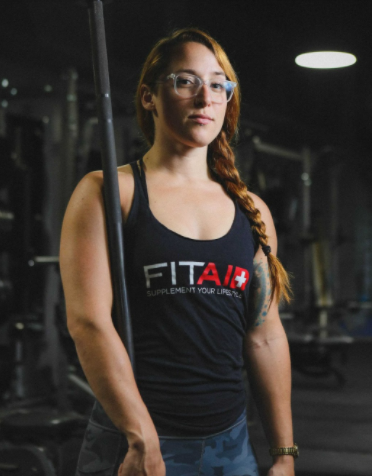
Hello LIFEAID Fam! My name is Ashlee Knotts, and I am your Sporty Sales Rep for the East Coast! My favorite workouts include anything with a barbell and box jumps, with a dash of functional mobility to keep the body feeling JUICY. I initially joined CrossFit to keep up with my fitness, but when I moved to Tampa, Florida, in March 2021 and joined CrossFit Big Guava, I was electrified with how strong the women are. It inspired me to get as beefy as possible. When I started doing two-a-days, like everyone does when they get the CrossFit bug, the only thing that would get me through was a cold can of FITAID RX. It drew me to work for the company because I have a nutrition background, and the quality of ingredients FITAID uses is undefeated. I competed in my first COED Competition that same year and placed 3rd. FITAID helped me get there. This is why I couldn’t be prouder to be part of the LIFEAID Crew so that I can help athletes from all levels feel supported, too!
LIFEAID Sales Team Member: Jake Sosna
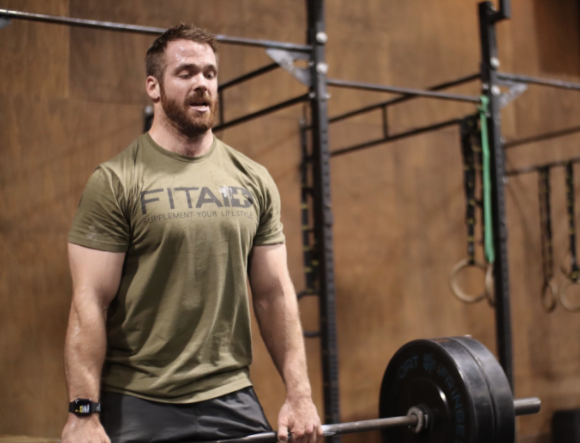
Hey Team! My name is Jake Sosna and I am your Sporty Sales Rep for the Central United States. I'm based out of Austin, Texas! My favorite CrossFit workout is DT which is 5 rounds for time of 12 Deadlifts, 9 Hang Power Cleans, and 6 Push Jerks at 155 pounds! I also enjoy anything involving the Assault or Echo Bike, I love tackling workouts that others hate! I first joined CrossFit after becoming bored with a normal gym routine. I needed to shake things up and make fitness fun again and CrossFit was the perfect solution. The OG FitAid Citrus Medley has always been and is still my favorite LIFEAID product. I was a 5 time All-American Swimmer in high school and injuries derailed my college career, but LIFEAID has provided me the opportunity to continue to impact lives through health and fitness. I could not be more proud to be part of the great culture that is LIFEAID!
LIFEAID Sales Team Member: Emma Baumert

Hey Team! My name is Emma Baumert and I am your Sporty Sales Rep for the Pacific Northwest! Sports continue to be a passion of mine as I compete in CrossFit, Weightlifting, and with Team USA Skeleton. Since I live in Portland, OR, you can find me taking my fitness outdoors to explore from the mountains to the ocean. When I walked into a CrossFit box in 2019, I had my first taste of FITAID Citrus Medley after doing the workout 'Grace' 30 Clean and Jerks for time. I was in love at first sip. Each gym I have the opportunity to visit has a unique culture and I am grateful to experience so many communities. I am proud to be part of this team and contribute to the vision of LIFEAID!
LIFEAID Sales Team Member: Karly Wilson
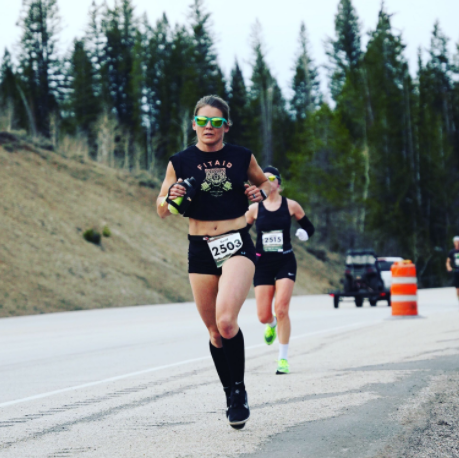
Hello! My name is Karly Wilson, and I’m your Regional Sales Manager of the West at LIFEAID Beverage company. My husband and I owned a CrossFit gym in Westminster, Colorado, for 9 years, and we were introduced to FITAID during one of our first Open workouts. I have run over 110 marathons, and I will be competing in the World Marathons, 7 marathons, 7 continents, 7 days. My favorite LIFEAID product would be FITAIDRX zero. It's literally the best tasting drink after a long run. LIFEAID has given me so many opportunities and has allowed me to continue with my passion for coaching and running. #wearelifeaid
Our LIFEAID Sales Team very much looks forward to partnering with you and your community!
If you are a gym owner or a CrossFit Affiliate and you carry LIFEAID Products there is a great chance that you’ve had the pleasure of meeting one of our fantastic reps! Our team is excited to get to know you better and they wanted to share a bit about themselves and the journey that […]
Aside from our mutual love of LIFEAID Beverages, what is one thing that connects us all?...Music!
Our team at LIFEAID put their heads together to curate a list of the jams that get us in the zone! We’ve separated these into two sections, Flow State and Sweat State. Perfect for when you want to buckle down and get to work and for when you need that heart rate up to finish your workout strong!
Flow state: A state in which the mind becomes fully immersed in an activity.
Here are the LIFEAID team’s favorite songs:
The Grateful Dead - Touch of Grey
A Tribe Called Quest - Electric Relaxation
https://www.youtube.com/watch?v=WHRnvjCkTsw
The Polish Ambassador - Let the Rhythm Just ft Mr Lif and Alya Nereo
The Marias - I don’t know you
Kygo - ID
https://www.youtube.com/watch?v=BZBL2UamV_w
Sainte - Champagne Shots
https://www.youtube.com/watch?v=0NSPpaXoUMo
J Cole - Love Yourz
https://www.youtube.com/watch?v=6tjlU4w4fSo
Six60 - Pepeha
https://www.youtube.com/watch?v=Ud4ROr8lJ1Q

Sweat State: When you’ve hit full stride in your workout A.K.A “Beast Mode”
Here are our favorite songs:
AC/DC - Thunderstruck
Andy Mineo - You can’t stop me
Deorro - Five Hour
Imagine Dragons - Radioactive
https://www.youtube.com/watch?v=ktvTqknDobU
Farruko - Pepas
https://www.youtube.com/watch?v=7aV5F_TdaGI
A-ha - Take on me
https://www.youtube.com/watch?v=djV11Xbc914
Cold Play - Sky Full of Stars
https://www.youtube.com/watch?v=NDonh28AY3I
Kanye West - Stronger
https://www.youtube.com/watch?v=PsO6ZnUZI0g
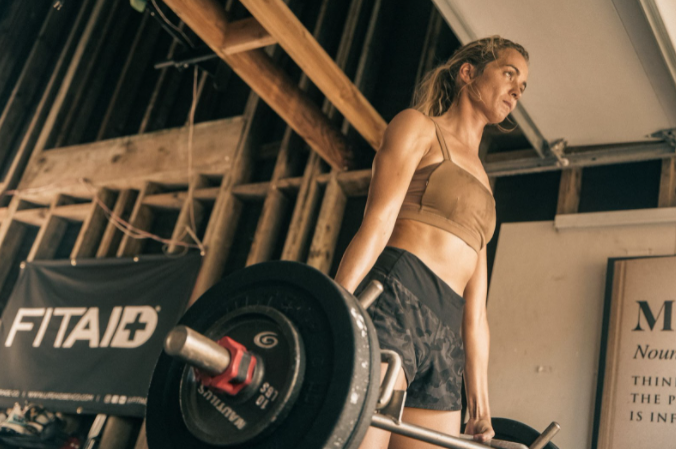
We hope you’ve enjoyed these favorites from the LIFEAID team to get you into the Flow State or the Sweat State!
Time to crack open an ice-cold can, turn up the tunes and get to work! Have a favorite song that gets you into the Flow State or Sweat State? Tag us on Instagram! @FITAID
Aside from our mutual love of LIFEAID Beverages, what is one thing that connects us all?…Music! Our team at LIFEAID put their heads together to curate a list of the jams that get us in the zone! We’ve separated these into two sections, Flow State and Sweat State. Perfect for when you want to buckle […]
If you want to take yoga seriously and make it an integral part of your daily routine, it is important to know when to practice it throughout the day. A common rumor is that you need to practice yoga at sunrise. However, there is no right or wrong time for yoga. No time is a bad time to do yoga while relaxing your mind and body. But, having a set time for your daily yoga can help.
You can practice yoga right after opening your eyes every day or before going to bed at night. In any case, you are bound to feel good, strong, and happy from head to toe. Both morning and evening yoga offer numerous benefits, but it is important to choose a suitable time for your lifestyle. Incorporating yoga into your routine is important, regardless of the time of day. What’s best for you is the best time!
While you can most certainly do yoga at any time of the day, the two common yoga routines include morning and evening yoga.
Morning Yoga
Many people prefer yoga in the morning to start their day with positivity. It is a good way of kick-starting your day with some amazing mental and physical health benefits. Practicing yoga can relieve aches and stiffness in the body, increasing flexibility and promoting better physical endurance.
This practice prepares your body for any physical challenges you may face during the day. Yoga can also help maintain your sugar levels throughout the day by enhancing digestion, as it boosts metabolism.
Furthermore, yoga also has numerous benefits for the mind and soul. For instance, it can support a calm and stress-free mood by increasing the production of feel-good chemicals called endorphins. Meanwhile, it reduces stress and other symptoms of psychological disorders by elevating levels of GABA in the brain. What else? It reduces the activity of the brain's limbic system, so you remain calm and can give a tempered response even in stressful conditions. So, morning yoga ensures that you experience a healthy mental state throughout your day.
Another benefit of practicing yoga in the morning is that it allows you to spend some alone time and connect with your inner self. While morning yoga has many benefits, make sure you do it when you feel motivated. It may not be the best time for night owls.
Evening Yoga
If you are not generally a morning person and find it hard to get up early in the morning, evening yoga may be the best choice. It is especially good for late sleepers who feel most energetic in the evening. Evening yoga has its own set of benefits that many yogis worldwide like to enjoy.
Firstly, it is a good time to lay down your mat and practice yoga because your body is relaxed and warm at this time. This allows you to practice all kinds of poses, unlike morning yoga, where your body is stiff and cannot stretch properly. Meanwhile, your evening energy and stamina help you get the most benefits from your daily yoga.
Practicing yoga in the evening is also good for the digestive system and prevents digestive orders such as diarrhea or constipation. It helps your body effectively digest the food you consume during the day, so you go to bed feeling light.
Furthermore, evening yoga, also called bedtime yoga, can help you sleep better. It relieves the physical and mental tension of the day and prepares the body for rest. Therefore, evening yoga is also a great choice for insomniacs.
You can practice yoga at any time to feel physically and mentally fit. However, make sure you choose a time according to your lifestyle and body rhythms. Some people also like to do it twice a day, morning and evening. Do you have a favorite time to do yoga? Or a reason it’s the best time for you? Tag us on Instagram and tell us why! @FITAID
If you want to take yoga seriously and make it an integral part of your daily routine, it is important to know when to practice it throughout the day. A common rumor is that you need to practice yoga at sunrise. However, there is no right or wrong time for yoga. No time is a […]
Santa Cruz, CA is home to many amazing places and features, our LIFEAID HQ office included! Just a short trip from San Francisco and San Jose, the beautiful area offers something for everyone! Let’s take a look at why we love Santa Cruz and some of our favorite things to do around HQ.

We are lucky enough to be walking distance from the beautiful ocean views that West Cliff Drive provides. Take a look out here: https://www.santacruz.org/listings/west-cliff-drive/

Just a few short miles away is another Santa Cruz spotlight- The Wharf! Think fresh food, salty sea air, and sea lions playing beneath you as you enjoy a stroll. Check it out: https://www.youtube.com/embed/QjNBWKB0sNc?autoplay=1

Santa Cruz is also home to beautiful redwood forests! Perfect for hiking and mountain bike riding!


Another fun Santa Cruz fact…It’s the birthplace of CrossFit! Original CrossFit founders opened the very first CrossFit Box in Santa Cruz in the year 2000!
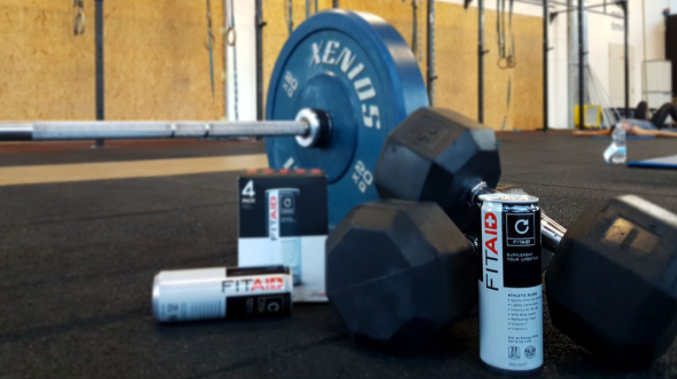
If you find yourself on the west coast of California come check out the many wonders Santa Cruz has to offer!
If you’ve been to Santa Cruz, tag us on Instagram with your favorite picture you’ve taken! @FITAID
Santa Cruz, CA is home to many amazing places and features, our LIFEAID HQ office included! Just a short trip from San Francisco and San Jose, the beautiful area offers something for everyone! Let’s take a look at why we love Santa Cruz and some of our favorite things to do around HQ. We are […]
A lot of people find it hard to choose between Pilates and Yoga as they both have mental and physical benefits, but what really is the difference between the two?
Pilates and Yoga are two different types of low-intensity workouts that are incredibly beneficial for people of all ages. Although different from one another in many ways, a lot of people confuse the two and consider them similar. As a result, many end up choosing the wrong kind of exercise option for their particular body.
While both Yoga and Pilates have numerous positive effects on overall health and well-being, it is important to understand the difference between the two. This way, you can make better choices to achieve maximum benefits.
If you are looking to improve your health and lead a better-quality life but can’t choose, let’s see what the the real difference is between yoga and pilates:
What is Yoga?
While the origin of Yoga still remains unknown to humans, it is believed that Yoga has been around for the past 3000 years. Yoga is most popularly known for its spiritual aspects and is a rooting practice in India. It also has roots in other eastern religious communities such as Buddhism and Shamanism, but is now widely practiced by many religious and cultural backgrounds. Yoga works on 5 beliefs, including proper relaxation, diet, positive thinking, breathing, and exercise.
There are many different types of Yoga, with something for everyone. These include Hatha Yoga, Yin Yoga, Restorative Yoga, Kundalini Yoga, Ashtanga Yoga, etc. The physical poses are known as asanas, whereas the breathing techniques in yoga are called pranayama.
Benefits
The meditative and physical exercise known as Yoga has many benefits for your mental and physical health.
- Sleep: Yoga relieves physical and mental stress, preparing your mind and body to sleep.
- Mental Health: The mindfulness and breath-work practiced in Yoga reduce stress levels and promote feelings of calmness. It can reduce symptoms of psychological disorders like anxiety and disorder.
- Flexibility: Yoga involves stretching that can improve flexibility.
- Physical Health: Yoga can effectively relieve body aches and prevent chronic and fatal illnesses.
What is Pilates?
Pilates is another low-intensity workout option that Joseph Pilates developed at the end of World War I to rehabilitate wounded soldiers. This suggests that Pilates is a great exercise to incorporate in your life for recovery and rehabilitation purposes. It originally came to the US in the year 1923 and has gone through quite some refining and evolution since then.
This kind of workout focuses on small movements carried by the important muscles of the core and back. It starts with controlled breath to initiate contraction of stabilizing core muscles. While it has special Pilates equipment with springs and levers, you can also practice Pilates on a regular mat.
Benefits
Pilates has many benefits and is especially good for individuals suffering from urinary incontinence, arthritis, back pain, joint injuries, and respiratory conditions.
- Core Control: Pilates helps with the development of stronger abdominal and core muscles, giving you better control.
- Posture and Flexibility: Pilates involves stretching that can improve flexibility, while core muscle engagement is great for achieving better posture.
- Rehabilitation: It is great for the rehabilitation of joint injuries, improved endurance as well as better body balance.
- Mobility: The active and passive stretching allows safe and improves joint mobility.
Yoga vs. Pilates- Which One Should You Choose?
Let’s find out the similarities and differences between Yoga and Pilates to help you make the best choice for you.
Similarities
- Little equipment needed
- Focus on breathing
- Reduce stress
Differences
- Pilates focuses on the core, while Yoga does not revolve around one area of the body
- Pilates breath-work focuses on energizing the muscles while Yoga breath-work induces relaxation
- Pilates involves constant movements, while Yoga deals with holding postures
- Pilates focuses on the external physical body, while Yoga is more about internal and spiritual aspects
All people have different physical and mental requirements. So, remember to make the right decision according to your lifestyle and needs. Love pilates or yoga? Or both? Tag us on Instagram with your favorite exercises! @fitaid
A lot of people find it hard to choose between Pilates and Yoga as they both have mental and physical benefits, but what really is the difference between the two? Pilates and Yoga are two different types of low-intensity workouts that are incredibly beneficial for people of all ages. Although different from one another in […]
Are you planning a trip and want to combine your yoga practice with nature? Combining yoga with traveling can make for an unforgettable experience. Our LIFEAID team compiled a list of the best places in the world to practice yoga! So pack your mat and get ready to check these awe-inspiring places off of your bucket list.
Yoga is indeed a form of self-care and self-love. After all, it has so many benefits for the mind and body. It can help you de-stress both mentally and physically. Not only does it improve your overall well-being and health, but it can also help enhance your quality of life.
A lot of people practice daily yoga to take a break from the daily busyness of life and spend some time with their inner-self. It is very much like travel that fuels the mind, body, and spirit. This is why people around the world organize yoga retreats to give people the opportunity to connect with themselves in healthy and natural atmospheres.
While you can practice yoga anywhere, some yoga destinations in the world can give you an incredible experience. Below are 4 of the best places in the world to practice yoga.
1. Rishikesh, India
Rishikesh is a beautiful place nestled under the foothills of the Himalayan mountain range. It is one of the top yoga destinations for various reasons, but especially because it happens to be the birthplace of yoga. This is the reason Rishikesh is also known as the ‘Yoga Capital of the World.’
Naturally, any yoga enthusiast will want to visit the place and practice some yoga. Rishikesh has a serene environment. The place is home to some of the world’s most renowned yoga retreats as well as teacher training classes.
2. Kauai, Hawaii
Hawaii has its own yoga culture that is big on ‘Aloha.’ Aloha refers to greetings of compassion, love, gratitude, and positive vibes. If you prefer a soothing and calming environment to practice yoga, you can’t miss out on a trip to Kauai.
It’s a great place to relax as you try your favorite poses among the softly blowing palm tree leaves and cool ocean breeze against your skin. Yogis from all around the world enjoy the peaceful island lifestyle of Kauai with its tropical rainforest and stunning Na Pali Coast.
3. Sedona, Arizona
Native American yoga enthusiasts consider Sedona to be a holy yoga destination. Yogis suggest that the sacred locale offers the most opportunity for healing and recovery through restorative yoga. Not only this, the medicinal spa treatments, crystal shops, and energy vortexes also add to the spiritual benefits of yoga when practiced here.
This is possible due to the calming surrounding and spiritual atmosphere of Sedona. People from all around the world visit Sedona, Arizona, to experience spirituality and healing at its best. Sedona yoga festival also takes place in the Red Rock State Park that offers yoga workshops, classes, and performances.
4. Ibiza, Spain
What comes to mind when you think about Ibiza, Spain? For most people, it is visuals of nighttime parties, clubs, and techno music. While Ibiza is a fantastic place to experience the dynamic nightlife, it is no less when it comes to yoga.
On the other side of the Island, you may experience unforgettable yoga spots with unmatchable relaxation and peace. One interesting thing about Spain’s relation with yoga is that it was one of the first European countries to address the importance of yoga. Even now, it embraces yoga practices by welcoming yogis with its beautiful year-round weather, tasteful cuisine, and calming sounds.
Whether or not you can tick off the above-mentioned yoga destinations any time soon, make sure to add them to your list. And don’t forget to share your experience on social and tag @fitaid
Are you planning a trip and want to combine your yoga practice with nature? Combining yoga with traveling can make for an unforgettable experience. Our LIFEAID team compiled a list of the best places in the world to practice yoga! So pack your mat and get ready to check these awe-inspiring places off of your […]
Yoga is a form of exercise that has multiple unmatchable benefits that not only improve your health but also enhance your quality of life. It emphasizes physical postures, breathing exercises, and meditation, all of which are great for your overall well-being.
It should come as no surprise that practicing yoga can increase flexibility, boost physical endurance and strengthen your core and limbs. But, it can also have a huge positive impact on your brain’s functionality and mental health. No wonder many people feel good even after the first yoga class. Yoga changes a lot of things for many people, but how does it specifically help your mind?
1. Improves Brain Function
While most people are aware of the physical benefits of yoga, not everyone knows about its fantastic brain-boosting powers. It is true that regularly practicing yoga can make your brain work in a much better manner, improving your focus and memory.
If you find it hard to complete tasks without getting distracted, you should practice daily yoga to regain concentration and focus. This is made possible due to the focusing aspect of breathing exercises in yoga. Not only do you have to pay close attention to the movement of your diaphragm, but yoga postures also involve a single focal point.
Moreover, you also need a focused mindset while holding a posture or stretching. This allows you to listen to your body’s needs closely. This ensures that you don’t go too far and injure yourself. In fact, it is difficult to get distracted while you’re holding a hard yoga pose. So, it allows your mind to clear its thoughts, improving your brain’s ability to focus.
2. Boosts Mood
Most yoga poses and postures focus on meditation and following a specific breath-work. These two elements alone are enough to calm your mind in case of running thoughts and feelings of sadness and confusion.
A lot of people experience a constantly negative mood that causes them to be easily irritable and short-tempered at all times. If you experience intense mood swings on a daily basis, practicing yoga may prove helpful. Like all other forms of exercise, yoga can reduce the levels of stress hormones in the body and increase the production of endorphins, the feel-good chemicals.
But, yoga can do a lot more than that to improve your daily mood, as studies reveal yogis experience higher levels of GABA. Gamma Aminobutyric Acid is a brain chemical or neurotransmitter associated with reduced anxiety and better mood. Regularly practicing yoga can elevate levels of GABA in the brain to help you be more joyful. Furthermore, meditation reduces the activity of the limbic system, so you have a more tempered response in stressful situations.
3. Relieves Depression and Anxiety
Yoga involves stretching and relaxing the muscles that release both physical and mental tension and stress. It can reduce stress levels and increase the production of feel-good brain chemicals to promote a calm and happy mood. While GABA improves your mood, it also happens to be the neurotransmitter that mental health patients lack.
So, yoga is a great approach for people who are suffering from psychological disorders such as anxiety and depression. The calming environment and meditative effect of yoga can also help clear disturbing irrational thoughts while reducing your blood pressure and heart rate. Yoga plays a huge role in maintaining a healthy mind and body balance that can automatically reduce stress levels and other symptoms of mental health disorders.
It proves beneficial for relieving depression, and many researchers also compare it to treatments like psychotherapy and medication. On the other hand, breathing exercises in yoga are highly beneficial for people with anxiety disorders who experience anxiety attacks.
Yoga has many amazing benefits for the mind, from improved mood and reduced stress levels to enhanced focus and concentration.
Yoga is a form of exercise that has multiple unmatchable benefits that not only improve your health but also enhance your quality of life. It emphasizes physical postures, breathing exercises, and meditation, all of which are great for your overall well-being. It should come as no surprise that practicing yoga can increase flexibility, boost physical […]
Yoga is gaining more and more popularity as time passes. More people from all across the world are making yoga an important part of their daily routine. This is due to various reasons, including its physical and mental health benefits. It is true that yogis have a different lifestyle, including unique perspectives, routines, and diet. Let’s learn about the diet staples of a yogi and the foods that keep your body nourished and your brain clear.
People who regularly practice yoga tend to stay healthier and lead a better-quality life. They see things from a unique perspective and have a more focused brain and fitter body. But did you know that most yoga practitioners or yogis also follow a certain yogic diet? After all, their healthy lifestyle is not just the result of stretching. Let’s see what a yogic diet is.
The Philosophy of Yogic Diet
For yogis, taking care of their health is very important, which explains why they are considerate about what they eat and what they put into their body. While yoga teaches you freedom, there is a focus on knowing the truth and making informed decisions. This is no exception when it comes to food or diet.
Yoga enthusiasts firmly believe in eating healthy and rejecting food items that may be harmful to the body or mind. While there is no certain yogic diet that all yogis follow, they most definitely make adjustments to follow the philosophy of Ayurveda. Ayurveda refers to an old healing system that dates back to 5000 BC.
For yogis, eating healthy is as important as determining good yoga postures. Many people misunderstand a yogic diet as a diet that helps you lose weight and look good. However, a yogic diet is all about choosing foods that can speed up healing and create a healthy balance between your mind and body.
Not to mention, yogic diet plans ensure that your food meets your body’s nutritional needs rather than just filling up your stomach. It should align with your yoga beliefs and nourish your body and mind.
What Do Yogis Eat?
As we mentioned earlier, most yogis follow the Ayurvedic philosophy when it comes to choosing a diet plan. In Ayurveda, there are mainly three categories called Sattva, Raja, and Tama.
- Sattva: The term Sattva refers to values of wholesomeness, purity, and clarity. Foundation of most yogic diet plans, Sattvic foods are food items that are easy to digest and rich in nutrients. These include nuts, legumes, seeds, herbal teas, and fruits and vegetables.
- Raja: Raja means force or power. Following a Rajasic diet would mean avoiding foods that are salty, bitter, hot, spicy, or dry. Yogis believe that such flavors can cause agitation and restlessness in the body. Rajasic diet-following yogis also avoid Sattvic foods that are deep-fried.
- Tama: This term talks about ignorance, instinct, or inertia. Yogis try to avoid these kinds of Ayurvedic foods as they believe such items can distract the mind and cause the body to feel heavy. Tamasic foods include fermented foods, tobacco, eggs, onion, garlic, and meat. Meat can make it hard for yogis to get in a meditative state as it contains uric acid and is also slow to digest. Yogis believe that consuming Tamasic foods can cause lethargy and depression.
Easy Guidelines You Can Follow to Eat Like a Yogi
Sattvic foods are the most popular choice of most yoga practitioners. However, they also prefer whole, unprocessed, and fresh foods over genetically engineered, and processed ones. Below are guidelines that can make you easy to follow a yogic diet along with your daily yoga practice:
- Look for fresh foods such as fresh fruits and vegetables
- Eat a balanced diet that meets your body’s Daily Value
- Avoid conventionally-produced food that contains GMOs and chemicals
- Practice intermittent fasting, but make sure to consult a doctor first
Are you practicing to become a yogi? Let us know the staples in your diet and the foods you consume to fuel your body and mind!
Yoga is gaining more and more popularity as time passes. More people from all across the world are making yoga an important part of their daily routine. This is due to various reasons, including its physical and mental health benefits. It is true that yogis have a different lifestyle, including unique perspectives, routines, and diet. […]